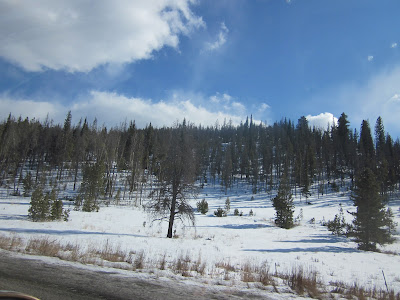Pine Beetles are an insect native to the forests of western North America. Under normal circumstances these beetles play a role in maintaining a healthy forest - they attack old and sickly trees. But the unusual weather patterns of the last few years - overly hot, dry summers and extremely mild winters - have caused the pine beetle population to explode and the beetles are now attacking healthy trees. The pine beetle lays its eggs under the bark of pine trees and at the same time introduces a fungus into the sapwood of the tree to prevent the tree from repelling and killing the attacking beetles with tree pitch. The fungus also blocks the transport of water and nutrients within the tree. The tree will be dead within a year of the attack. Recent studies have found that the beetles are now breeding twice a year instead of only once.
 |
| Large Pile of Timber waiting to be burned |
While all the dead standing timber can be unsightly, the trees still serve a purpose. Dead trees provide shelter for over 1,000 species of wildlife - raccoon & squirrels, innumerable bird species, and many insects call dead timber home. One species of lichen which is food for deer prefers to grow on dead trees. As dead trees decay, they will fall to the forest floor and provide nutrients for the plants around them. These deadfall trees also provide a perfect growing environment for young seedlings. Nothing goes to waste in Nature.
The local town of Frisco has embraced the Mountain Pine Beetle by holding a festival. This event serves to educate the public about the impact this insect has had on the area. Maybe their celebrating will help scare away those 'evil little bugs'!

















1 comment:
What a shame to see so many dead trees, but as you say they provide so much for others in nature. We have a a type of beetle here, a borer of some kind, I forget the name at the moment. It is killing of a lot of trees. There are elaborate trap-boxes attached to trees all over the place. Humans think they can stop it. (probably not)
Post a Comment